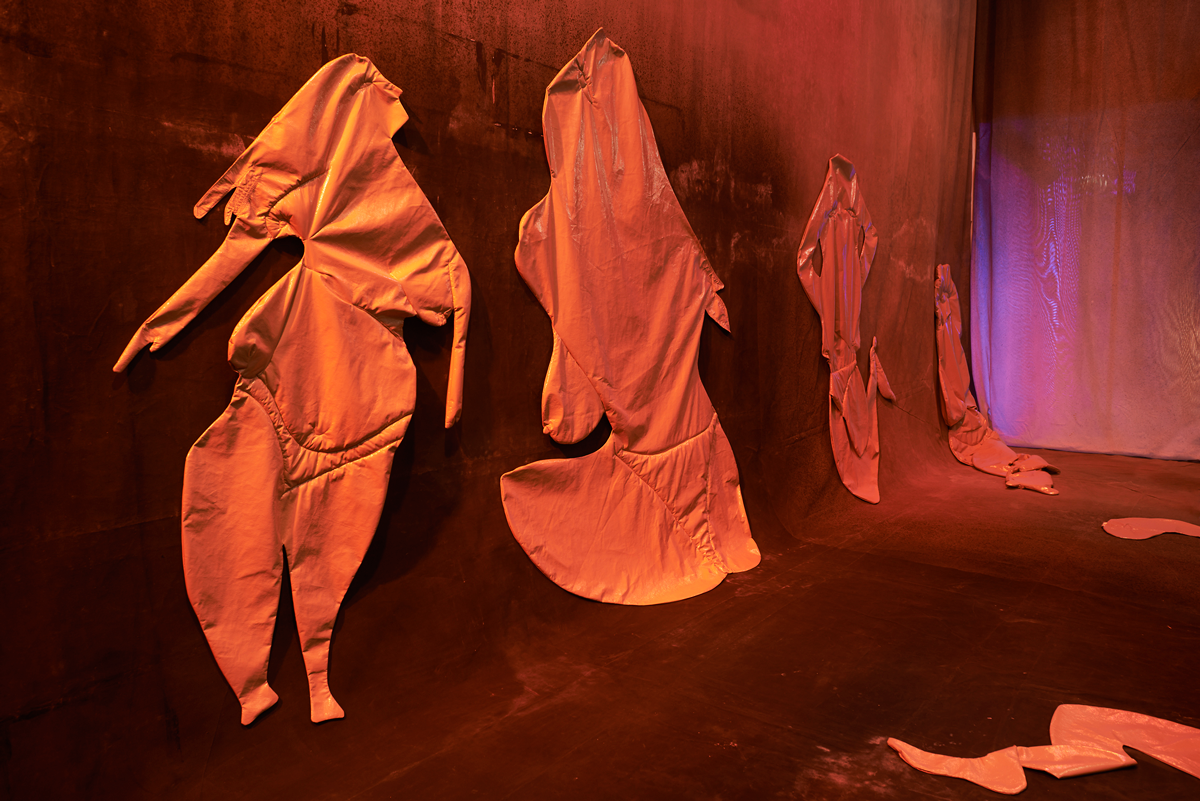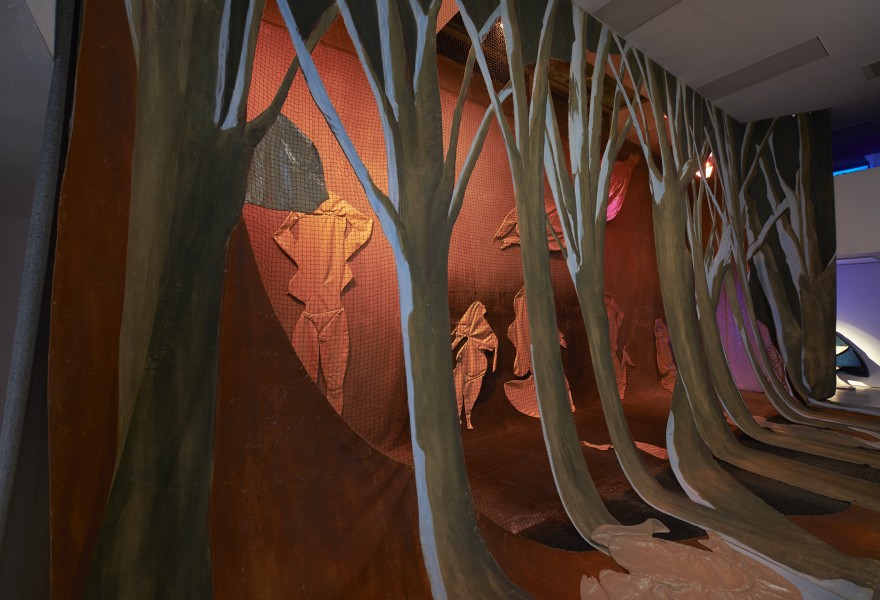28 march 2019, Wouter van den Eijkel
Pauline Curnier Jardin - I still send you a lot of affection and I kiss you through my dentures
“Maybe menopause is the last niche where capitalism cannot go. Maybe it’s some kind of haven from it“. Pauline Curnier Jardin (Marseille, 1980) makes this statement in the interview accompanying the I still send you ... exhibition and is typical of her. That’s not to say that the work of the French artist is easy to interpret. Her gallerist, Ellen de Bruyne, even confesses that every attempt at this is "inevitably doomed to fail, and even if you were to come up with a plausible interpretation, she’ll comes up with cross-references you haven’t thought of yet".
De Bruyne’s statement is understandable, if you’d just consider the number of media in which Curnier Jardin works. Nowadays, she makes films, installations, sculptures and works on paper. Her work shows a clear understanding of drama and melodrama. This goes back to both her background in theatre, Curnier Jardin spent part of her teenage years on stage, and to her love of French musical films from the 50s and 60s.
Yet these two lines contain many of the ideas and topics that regularly recur in her work: the apparent paradox of female sensuality and sexuality and feminism, and a cheerful questioning of current standards. Curnier Jardin completed the Rijksacademie in 2016 and won the NN Group Art Award two years later at Art Rotterdam. I still send you ... is her first solo exhibition in the Netherlands since she received this prize.
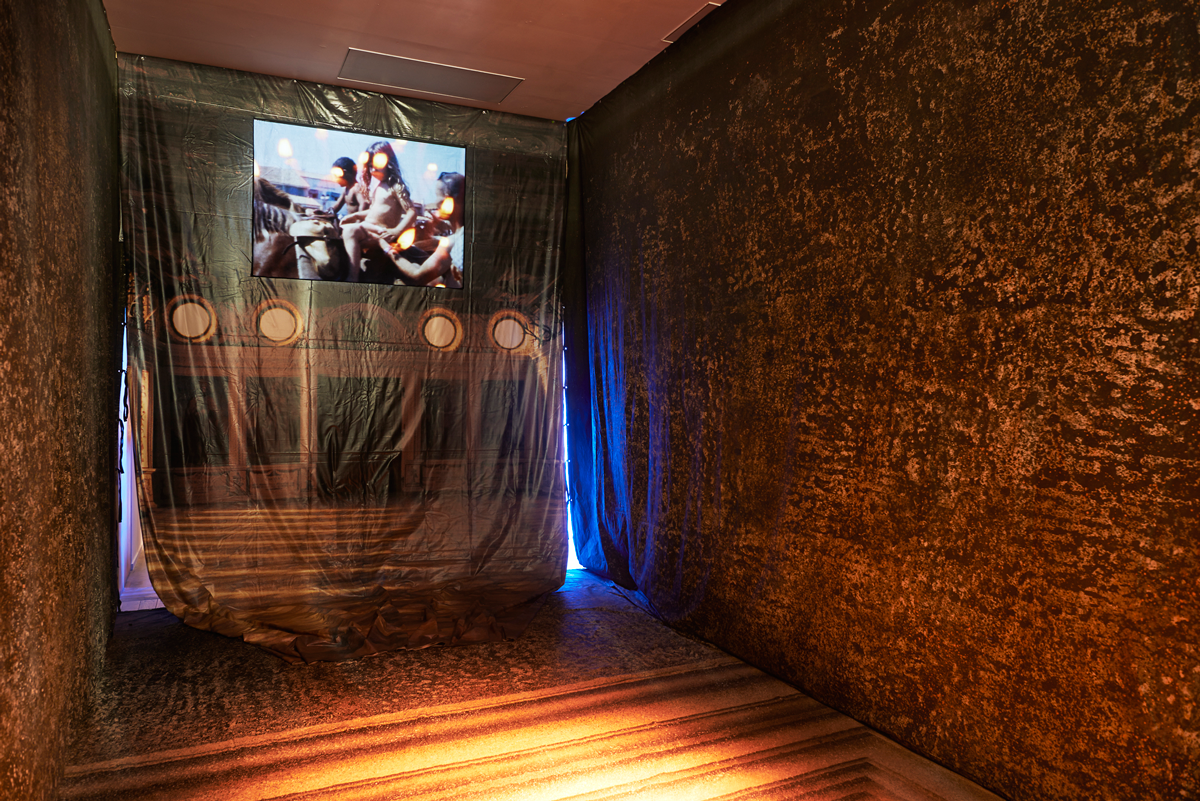
Sebastiano Blu
The teaser of Curnier Jardin's latest film Sebastiano Blu can now be seen at 1646. The film tells the tale of Giorgetto, a young man from a town around the Mediterranean. At first glance, Giorgetto seems to be a celebrated man; he is the local DJ and meets the standards. Nothing could be further from the truth. Like many young people in southern Europe, he still lives with his parents against his will. Worse still, he doubts his fertility and suffers from delusions about menopausal women who he believes to possess super powers. Giorgetto thinks he has found the solution to his fertility problem by taking the place of the statue of the local patron saint - the saint of fertility and reproduction - during the cross procession. It will certainly mean his end as a member of the community.
Curnier Jardin does not want to disclose where she shot the film. According to her, a specific location is not that important. It is a parable about the Mediterranean world, a continent she refers to as the liquid continent. A continent without too much economic activity, meaning the prospects for young people like Giorgetto are not the same as here in Western Europe. Due to the stagnating economy, the status quo is maintained and traditions and rituals continue to play a major role in public life. As a result, only a few are able to escape from these communities with their coercive social control.
It is also a continent throughout which roughly the same is thought about the role of men and women. Men are in charge in the public space, but have fairly little to say at home, where they have to obey their mothers and wives.
In her work, Cunier Jardin accounts for the roles that women have played in mythology, folklore and cinema. These roles are often no more than a stereotype as a saint, witch, mother or mystical power. Just as in her earlier films like Ah Jeanne, the women in Sebastiano Blu have special powers. And just like in the quote at the top of this article, Sebastiano Blu discusses rituals, socio-economic and gender relationships.
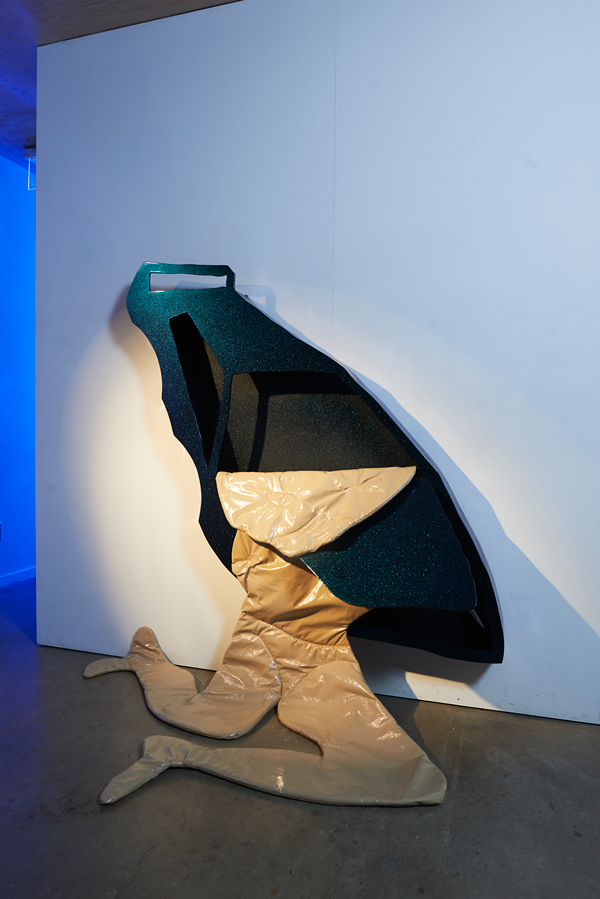
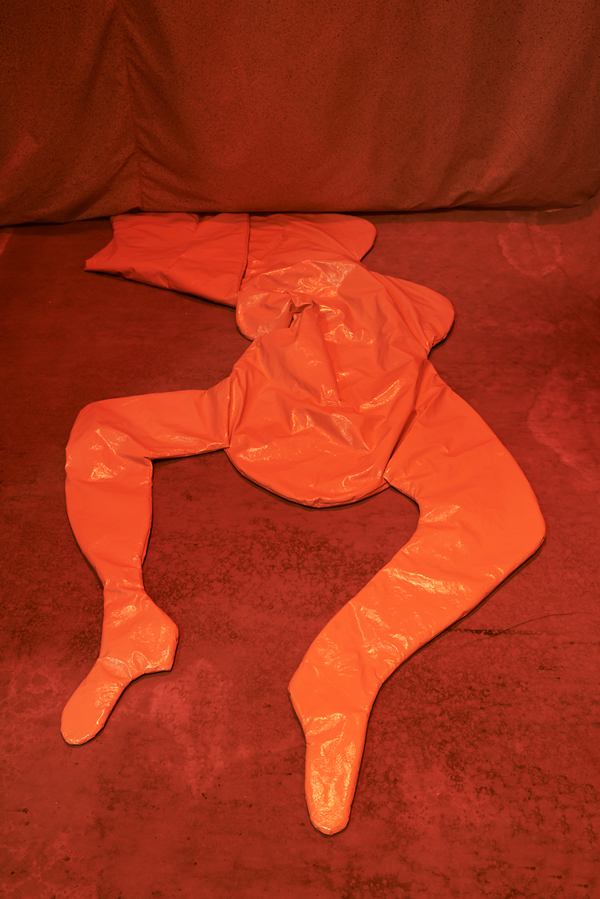
The Forest of the Hot Flashes
Menopausal women are still background figures in Sebastiano Blu. They are promoted to main subjects in the next room. The Forest of the Hot Flashes is a wall-spanning installation. The transition between the spaces and the various media - from film to female figures executed in PU-leather and placed in a former theater setting - is hardly noticeable because the tone of the work is similar. The Puddle Ladies, the female figures in PU-leather, are based on charcoal drawings that are not included in the exhibition, but that you can see here online. The drawings have been put down in a few strokes with a surefire hand.
The name of the installation not only reveals its theme, the menopause, but is also typical of the kind of tragicomic, theatrical engagement at which Curnier Jardin excels. The Forest is not a scary or sad place according to Curnier Jardin. It is a place where women who are "off the market", as she calls it, can find peace and enjoy themselves. They have placed themselves outside the "cycle of socially desirable reproduction."
I still send you a lot of affection and I kiss you through my dentures - Pauline Curnier Jardin can be seen until 21 April at 1646 in The Hague.
